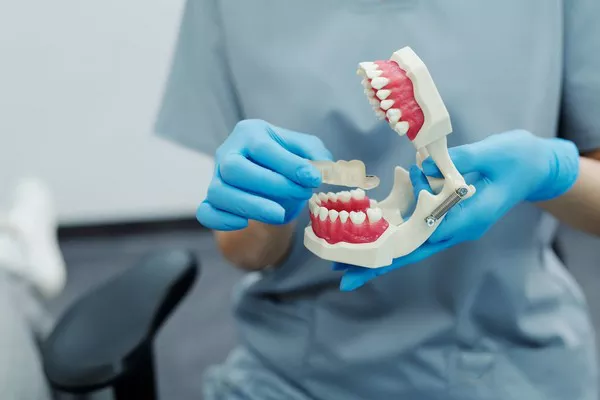Whitening strips have become a popular choice for those seeking to brighten their smiles and achieve a whiter, brighter appearance. However, it’s essential to understand how often to use whitening strips to avoid potential risks and ensure optimal results. This article provides comprehensive information on the recommended frequency, product instructions, safety precautions, expected results, post-treatment care, consultation with a dentist, and alternatives to strips when considering the use of whitening strips.
Recommended Frequency
Most dental professionals recommend using whitening strips once every three to four months. This interval allows time for the teeth to recover from the bleaching process and prevents potential damage to the enamel. Overusing whitening strips can lead to tooth sensitivity, gum irritation, and enamel erosion, so it’s essential to follow the recommended frequency to maintain oral health while achieving desired results.
Product Instructions
When using whitening strips, it’s crucial to carefully follow the specific instructions provided with the product. Different whitening strips may have varying guidelines regarding application time, frequency of use, and duration of treatment. Failure to follow these instructions can result in uneven whitening, sensitivity, or other adverse effects. Always read and follow the manufacturer’s recommendations for best results and safety.
see also: Do Whitening Strips Hurt Your Enamel
Safety Precautions
Overusing whitening strips can pose risks to oral health, including increased tooth sensitivity and enamel damage. To minimize these risks, it’s essential to adhere to the recommended frequency of use and avoid leaving whitening strips on for longer than instructed. Additionally, individuals with sensitive teeth or existing dental issues should consult with a dentist before using whitening strips to ensure they are suitable for their oral health needs.
Expected Results
The results of using whitening strips can vary depending on factors such as the severity of tooth staining, the quality of the whitening product, and individual oral health habits. Typically, whitening strips can produce noticeable results within a few days to a couple of weeks of regular use. The effects of whitening strips may last between six months to a year, although this can vary from person to person. To maintain the results, it may be necessary to touch up periodically or adjust oral hygiene habits and dietary choices.
Post-Treatment Care
After completing a whitening treatment with strips, it’s essential to maintain good oral hygiene practices and make dietary choices that support a whiter smile. This includes:
Regular Brushing and Flossing: Brushing teeth twice daily with fluoride toothpaste and flossing once a day helps remove surface stains and prevent new stains from forming.
Limiting Staining Foods and Drinks: Avoid or minimize consumption of foods and beverages that can stain teeth, such as coffee, tea, red wine, and dark-colored berries.
Using Straws: When drinking beverages that may stain teeth, use a straw to minimize contact with the front teeth.
Regular Dental Check-Ups: Schedule regular dental check-ups and cleanings to maintain oral health and address any concerns promptly.
see also: How Long Does Tooth Sensitivity Last After Whitening Strips
Consultation with a Dentist
Before starting any whitening treatment, including the use of whitening strips, it’s essential to consult with a dentist. A dental professional can assess the health of your teeth and gums, identify any underlying dental issues that may affect whitening results, and recommend the most appropriate whitening method for your needs. Additionally, individuals with dental restorations, such as crowns or veneers, should consult with their dentist before using whitening strips to avoid potential damage to these restorations.
Alternatives to Strips
While whitening strips are a popular choice for at-home teeth whitening, there are alternatives available for those seeking different whitening options. Professional teeth whitening treatments performed by a dentist offer faster and more dramatic results than over-the-counter products. Additionally, whitening toothpaste and mouth rinses can help maintain whiteness and remove surface stains, although they may not be as effective as whitening strips or professional treatments for deeper stains.
Conclusion
Understanding how often to use whitening strips is essential for achieving safe and effective results. By following the recommended frequency of use, adhering to product instructions, taking safety precautions, and maintaining post-treatment care, individuals can enjoy a whiter, brighter smile without compromising their oral health. Before beginning any whitening treatment, it’s important to consult with a dentist to ensure the treatment is suitable for your oral health needs and to explore alternative options if necessary. With proper care and attention, whitening strips can be a convenient and effective way to enhance your smile and boost your confidence.
FAQs About Teeth Whitening Strips and Kits
1. How many times a year is it safe to use whitening strips?
The frequency of using whitening strips can vary depending on the individual and the specific product used. In general, it’s recommended to follow the instructions provided with the whitening strips. Most manufacturers suggest using whitening strips once a day for a specified period, such as two weeks. Using whitening strips too frequently can lead to tooth sensitivity and irritation of the gums. It’s essential to consult with your dentist before starting any teeth whitening regimen to ensure it’s safe and appropriate for your oral health.
2. How often should I use a teeth whitening kit?
The frequency of using a teeth whitening kit depends on the strength of the whitening agent and the specific instructions provided by the manufacturer. Some teeth whitening kits are designed for daily use, while others may recommend less frequent use, such as every other day or a few times a week. It’s important to follow the recommended usage instructions to achieve the desired results without causing harm to your teeth and gums. If you experience any discomfort or sensitivity while using a teeth whitening kit, stop use and consult with your dentist.
3. Do whitening strips work after one use?
While some people may notice a difference in the brightness of their teeth after just one use of whitening strips, it typically takes several applications to achieve noticeable results. Whitening strips contain a bleaching agent that gradually removes stains from the enamel of the teeth. Consistent use over time is necessary to achieve optimal whitening results. It’s essential to follow the recommended usage instructions provided with the whitening strips and be patient with the process.
4. How often should I use Crest White Strips with light?
Crest White Strips with light typically come with specific usage instructions provided by the manufacturer. It’s essential to follow these instructions carefully for the best results and to avoid potential side effects such as tooth sensitivity or gum irritation. Most Crest White Strips with light are designed for daily use for a specified period, such as two weeks. After completing the initial treatment period, some individuals may choose to use the product less frequently for maintenance purposes. Always consult with your dentist before starting any teeth whitening regimen to ensure it’s safe and suitable for your oral health.
You Might Be Interested In































